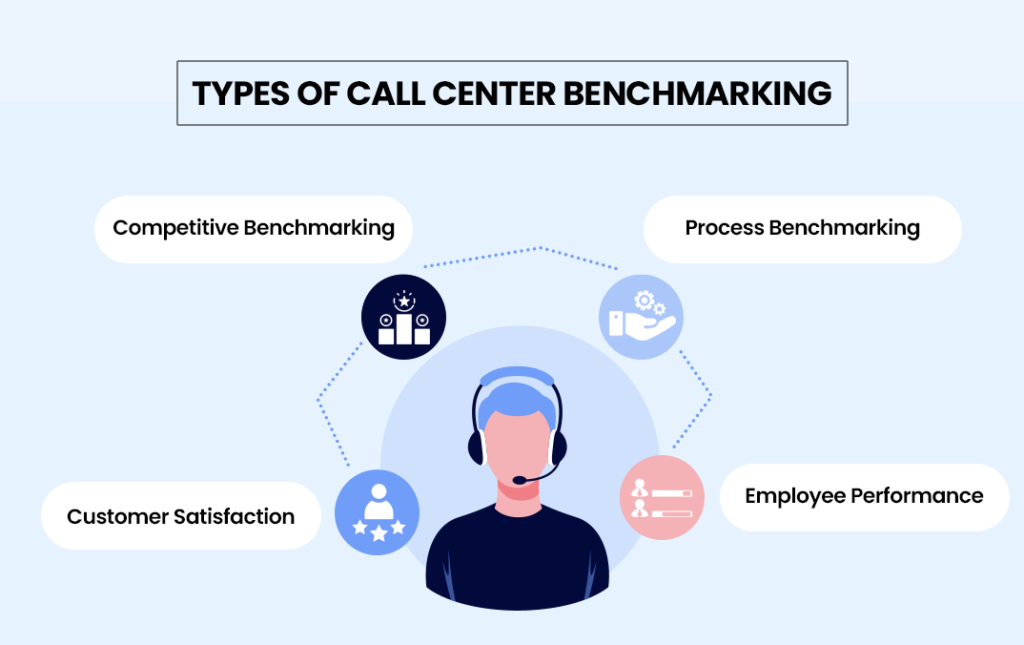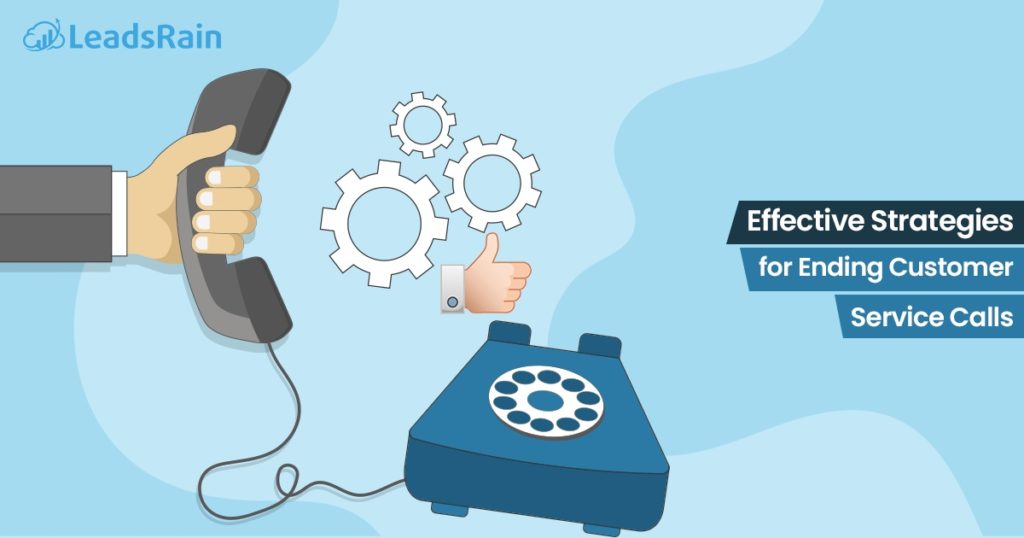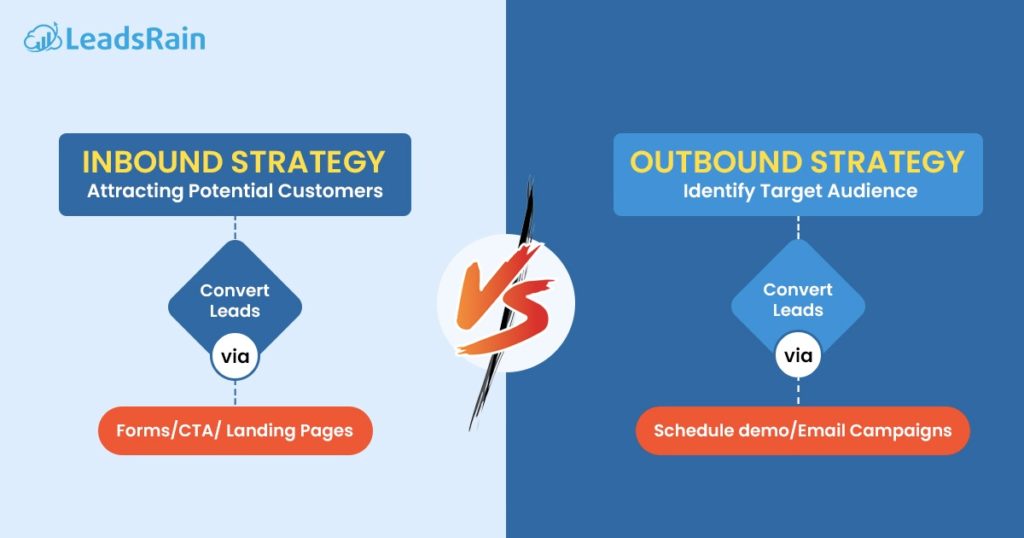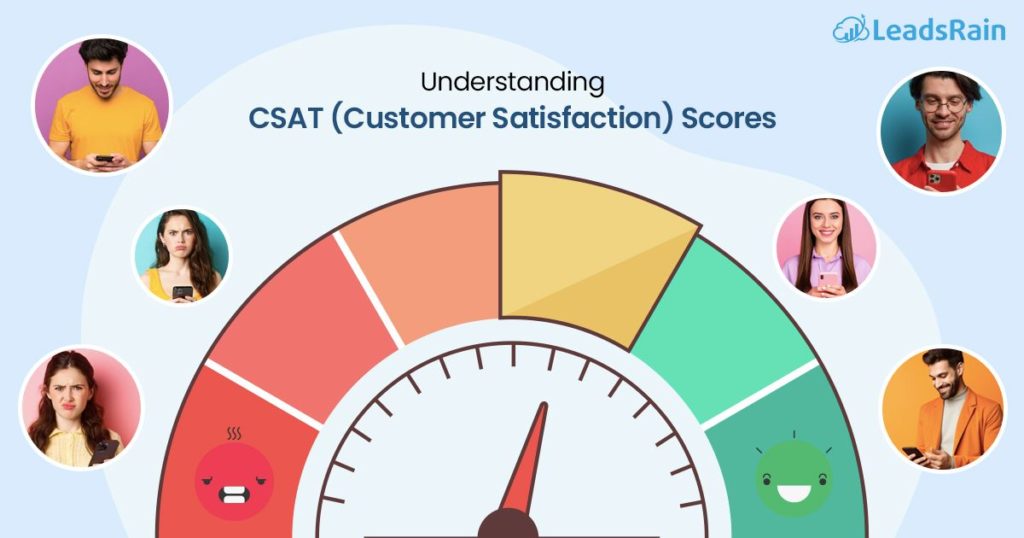In the US alone, there are more than 33 million businesses. In the frantic marketplace of 2024, being “good” is insufficient. Call center benchmarking has become crucial in light of this.
Consider it this way: Let’s say you are planning a road journey to a distant location. So to ensure a smooth and enjoyable travel, the GPS would show you the best route to take, and the estimated time of arrival, and even offer real-time updates on your whereabouts.
Similar to this, call center KPIs act as guiding indicators to encourage quality and modification to your call center’s operations.
Here, in the handbook of call center benchmarking, we have covered the meaning, significance, ways to improve, and how to perform in the call center operations with set benchmarks.
What is Call Center Benchmarking?
Call center benchmarking is the systematic strategy of continuously focusing on the identification, examination, deployment, and evaluation of mindful practices to develop and maintain a competitive edge among industries. They usually measure the metrics by tracking the internal performance of the business by comparing key metrics against average industry benchmarks.
In other words, the standards set by call centers or businesses to determine whether their operations are before intentional industry standards or global benchmarks are called call center benchmarks.
Types of Call Center Benchmarking
Below we have an outlook few major types of call center benchmarks that can be used to measure their performance;

- Competitive benchmarking involves the comparison of your company’s performance, product/services, or marketing strategies against those of your competitors in the industry.
- Process benchmarking is a systematic practice of comparing an individual business’s process/operations against those of the leaders in the specific industry to recognize areas of improvement.
- Customer satisfaction simply measures the NPS, CSAT, and CES to determine and identify opportunities for improvement.
- Employee performance consists of employee-related comparisons like agent productivity, attendance rate, etc to assess workforce performance of employees and accordingly provide training to them.
Why Does the Call Center Benchmark Matter?
Call centers are essential to retaining customer loyalty, resolving problems, and ensuring effective communication between companies and their clients. Benchmarking becomes an essential asset for contact centers as businesses want to simplify the way they function.
Call center benchmarking is the dominant power when working against competitors globally. They enable you to monitor the performance and competence level of your agent which ultimately supports the formulation of new marketing strategies.
The point of matter: why do they matter?
By pointing out areas where your contact center is falling short of your competitors, benchmarking enables you to detect inefficiencies and unproductive behaviors and helps you formulate agendas. Using benchmarking to assess call volumes, peak hours, and service level agreements, one may calculate the ideal staffing levels.
Benchmarking eventually contributes to improving the customer experience. Call centers that collaborate with industry professionals may augment service quality, lower wait times, and cultivate positive relationships.
6 Proven Ways to Improve Call Center Benchmark
Many of you still lag the desired results even after setting benchmarks. So to equip with 100 % results along with set benchmarks, one must adopt these best-proven tactics, which are;

#1. Perform advanced analytics
Making a daily ritual of tracking and analyzing key performance indicators through advanced analytics tools will assist in pinpointing areas for improvement. Determine metrics such as ACH (average call handling time), FCR ( first call resolution rate ), and multiple customer satisfaction score (CSAT).
#2. Run Smooth processes
Recognize the inefficient processes within call center workflows like call escalation procedures, ticketing systems, etc. to eliminate the unnecessary steps and sleek the call center workflows more efficiently.
#3. Employ QA programs
Gauge agent performance with/establish quality assurance programs to assess call monitoring and call scoring. Quality assurance will help call center agents refine their skills and aim to deliver a high level of service.
#4. Deliver omnichannel access
Work on seamless customer experience by offering them multiple channels such as phone, email, text messages, social media platforms, etc.. to streamline efficient communication across platforms.
#5. Promote employee engagement
Create a positive work environment by promoting employee engagement and recognition initiatives. When employees are fully engaged, motivated, and happier they are likely to achieve call center benchmarks.
#6. Finance automated technologies
Put your money in the hands of highly modernized technologies like speech analytics, CRM systems, and predictive dialers to automate outbound calls, schedule calls, and streamline call center processes.
How to Perform Call Center Benchmarking?
Call centers use benchmarking as a crucial technique to measure performance and pinpoint areas for improvement. We have listed out step-by-step on how to effectively conduct call center benchmarking;
Define objectives clearly.
Specify the targets that you plan on accomplishing using benchmarking, such as raising first-call resolution rates, decreasing average handling times, or growing customer satisfaction.
Identify relevant metrics.
Select KPIs that support your goals and offer a complete picture of performance. Some of the common KPIs are average handling time, first call resolution, customer satisfaction score, and service level.
Gather data and sources.
It’s time to collect relevant performance data from your call center over a considerable period to guarantee accuracy. You need to gather both internal and external data from reputable sources, such as industry experts and benchmarking studies.
Analyze and measure performance.
Examine how your call center’s performance compares to the relevant internal and external standards. Identify the gaps where your performance might lag and note them to modify them with recent trends or patterns.
Make strategic decisions.
Focus on constructing mindful strategies that are proven to yield positive results in high-performing call centers.

Conclusion
Every call center’s fundamental goal is to deliver the most influential customer experience. That’s where benchmarking comes in! It’s valuable to build connections with recognized CRMs and automated technologies to synchronize your data among platforms.
Deliver the best results to your potential clients!




